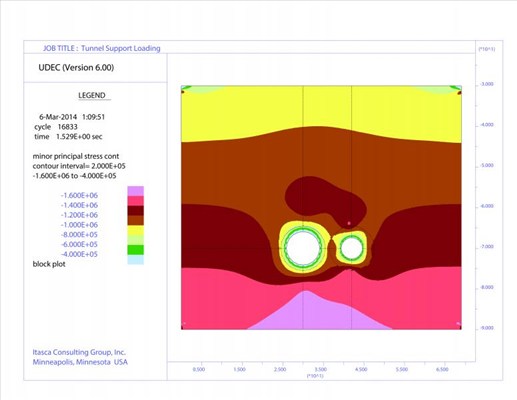Your single point of reference for all your Geotechnical Inquiries
UDEC
UDEC (Universal Distinct Element Code) is a numerical modeling code for advanced geotechnical analysis of soil, rock, and structural support in two dimensions. UDEC simulates the response of discontinuous media (such as jointed rock) that is subject to either static or dynamic loading.
The discontinuous medium is represented as an assemblage of discrete blocks while the discontinuities are treated as boundary conditions between blocks. Large displacements along discontinuities and rotations of blocks can occur. UDEC utilizes an explicit solution scheme that can model complex, non-linear behaviors.
Models may contain a mix of rigid or deformable blocks. Deformable blocks are defined by a continuum mesh of finite-difference zones, with each zone behaving according to a prescribed linear or nonlinear stress-strain law. The relative motion of the discontinuities is also governed by linear or nonlinear force-displacement relations for movement in both the normal and shear directions. Joint models and properties can be assigned separately to individual, or sets of, discontinuities.
Because it is not limited to a particular type of problem or initial condition, UDEC may be applied to a wide variety of physical behaviors or any case where an understanding of the two-dimensional response of such structures is needed. UDEC is capable of simulating and is used for a wide range of engineering and scientific analyses including:
•Stability analysis of jointed rock slopes;
•Deep underground excavations;
•Blasting effects;
•Microseismicity;
•Ground support reinforcement;
•Underground construction;
•Integrity of radioactive waste storage facilities;
•Fluid-pressurized tunnels;
•Natural gas storage in rock caverns;
•Dams and dam foundations;
•Fluid flow though jointed rock;
•Earthquake engineering;
•Solid mechanics and micro-damage of intact materials; and
•Stability of masonry structures.
USA














